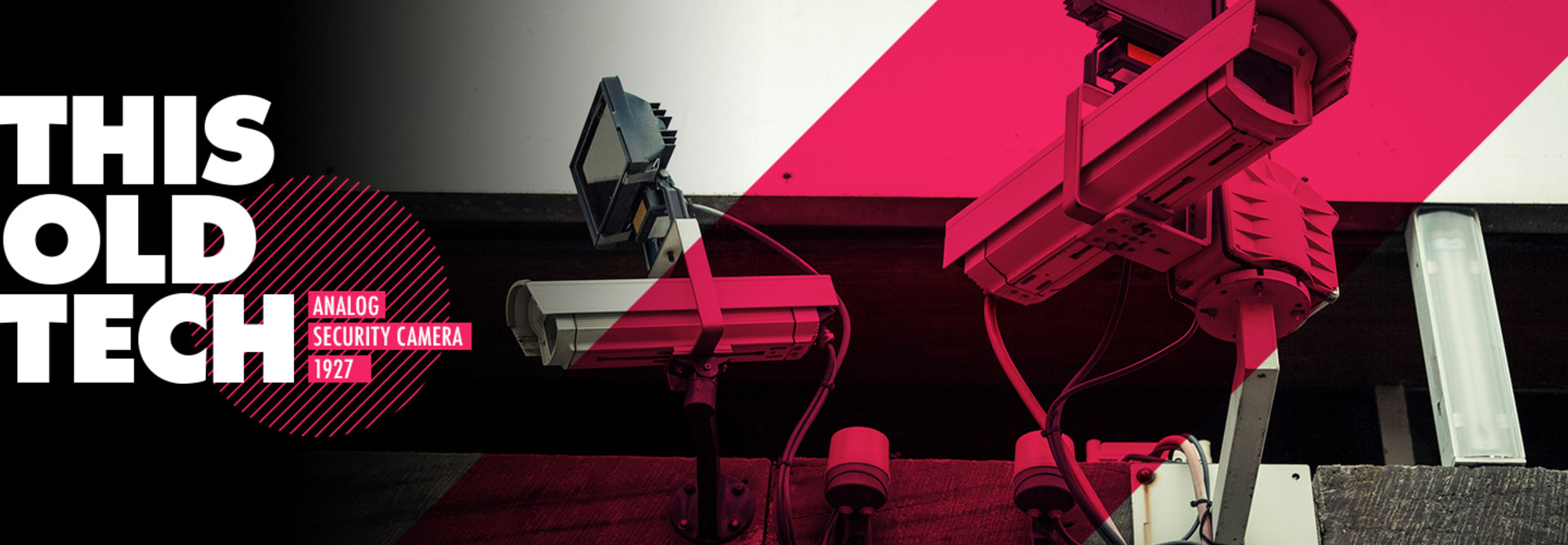What Is an Analog Security Camera?
Analog security cameras are used to record surveillance footage using a closed-circuit television system.
That means captured images are only monitored only for security purposes and are contained to a limited network, not for public broadcast.
Videos recorded on this type of security camera are transmitted as an analog signal over a coaxial cable to a DVR. If the DVR is connected to a router and modem, then the videos can be sent over the internet and to be accessed on remote computers and other devices.
This technology was a game changer for colleges and universities because it gave them extra eyes to detect and prevent crime, bolstering public safety on school grounds.
When Were Analog Security Cameras Introduced?
Russian physicist Leon Theremin — also known for inventing the theremin, one of the first electronic instruments — is often credited for developing the world’s first closed-circuit TV system in 1927. It was able to transmit low-resolution images over shortwave radio, allowing the Kremlin to monitor approaching visitors. He even created an electronic security system used in the prisons Sing Sing and Alcatraz.
German engineer Walter Bruch also pushed forward closed-circuit TV technology in 1942. He figured out a way to safely monitor the launch of the V-2 rocket-powered bomb designed by the Nazis. It was one of the first times a video feed was used for real-time monitoring rather than public broadcasting.
Meanwhile, in the U.S., government contractors started commercializing closed-circuit TV cameras for private security firms. Still, these systems were limited. They were low in resolution, required a monitor for each camera and could only broadcast live feeds (not record and store them), according to a book on privacy in the U.S. by Lawrence Cappello, an assistant professor of history at the University of Alabama. That meant they required constant monitoring.
The commercial use of closed-circuit TV continued to expand in the 1950s. They were used to “check assembly line progress, guard warehouses, supervise prison cell blocks” and more, Cappello writes. By then, recording footage was possible because of reel-to-reel tapes, but the technology was often too cumbersome to be useful until the advent of VCR technology in the 1970s.
Video surveillance in both public and private areas continued to grow in the 1980s and 1990s because it was a “cheaper way to deter crime,” Cappello explains. It wasn’t until the late 1990s to early 2000s — a time when the increasing frequency of school shootings pushed schools and the government to improve ways of keeping students and staff safe — that these cameras started entering schools.
What’s the Role of Analog Security Cameras on Campuses Today?
Some campuses still use analog security cameras because they’re relatively cheap and simple to install. Schools also can upgrade them with video encoders that digitize the recorded footage and transmit it over IP networks.
But many have moved on to IP-enabled cameras to enhance their security coverage without hiring additional security personnel. IP cameras aren’t new: In 1996, the world got a look at the first network camera, the Axis NetEye 200, which allowed users to view video footage via the internet.
The technology and software supporting IP cameras have greatly improved, making such cameras smarter and more flexible than ever before. They also offer better performance, improved scalability and higher-resolution videos. IP cameras today come with all sorts of features, from thermal capabilities to built-in analytics with motion and facial recognition, plus reliable video management systems that effectively secure data.
Following trails blazed by analog pioneers, today’s IP video surveillance technology allows colleges and universities to efficiently respond to safety concerns and be more proactive in their security efforts.
“This Old Tech” is an ongoing series about technologies of the past that had an impact. Have an idea for a technology we should feature? Please let us know!











